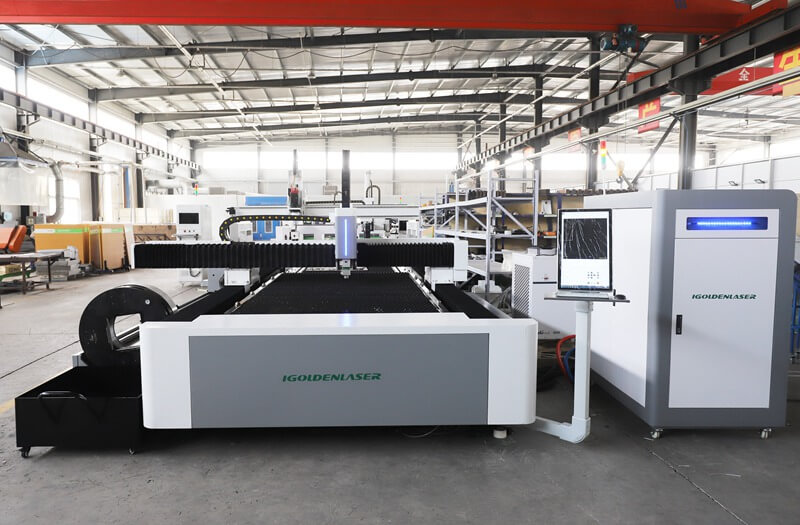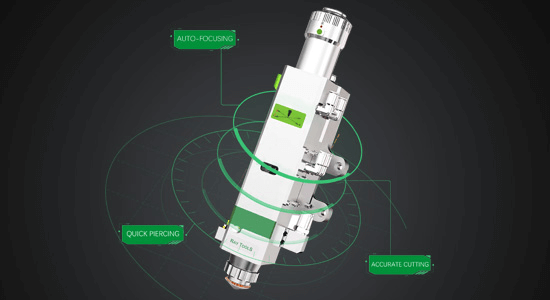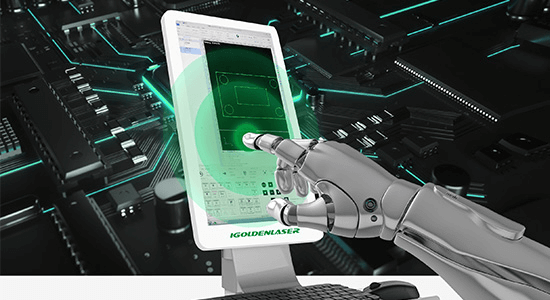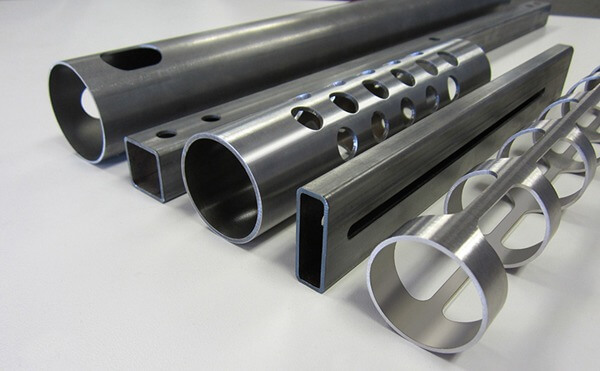Laser Knowledge
A Guide for CNC laser cutting machine
Fiber laser cutter is a manufacturing process that uses focused high power laser beams to cut the material into a custom shape and design. This process is suitable for various materials, including metals, plastics, wood, gems, glass and paper, and can produce precise, complex and complex parts, and tools that need to be customized.

There are several different types of automatic fiber laser cutting machine, including melting cutting, oxidation and scribe. Each laser cutting process can produce precision, accuracy, high-quality edge surfaces, and usually less material pollution, physical damage, and waste, rather than other conventional cutting processes, such as mechanical cutting and water jets. However, although laser cuts exhibit certain advantages during a more traditional cutting process, some manufacturing applications may have problems such as cutting reflective materials or materials that require secondary processing and finishing work. Requirements and specifications required for specific cutting applications – for example, materials and their performance, energy and power limit, secondary finishing, etc. – Help determine the type of cutting process that is best for use.
Although each cutting process has its advantages and disadvantages, this paper is focused on best CNC fiber laser cutting machine, outline the basis of the laser cutting process and the necessary components and mechanics of the laser cutting machine. In addition, this article explores various laser cutting methods and applications, process benefits and restrictions, and a comparison between laser cutting and other types of cutting processes.
Laser cutting machine and process
Laser cutting is a non-contact thermal based manufacturing process for metal and non-metallic materials. For laser cutting processes, there are several factors, such as a carbon fiber laser cutting machine, and a type of laser and auxiliary gas using a laser cutting machine.
CNC fiber laser cut machine components and mechanics overview
The water jets of the pressurized water and the abrasive material were cut with a water jet of the abrasive material using a mechanical cutting using a cutting tool and a powered drive, and the CNC fiber laser cutting machine was used to generate cutting, sculpture and labeling. Although the fiber cutting laser machine changes from the model and applied to the application, typical settings include laser resonator assemblies, mirrors, and laser cutting heads, including laser focus lenses, pressurized gas components, and nozzles. The fiber laser CNC machine process consists of the following stages:
- Beam generation
- Beam focus
- Local heating and melting
- Material injection
- Beam movement
Each stage is an integral to a laser cutting process, and precise cutting occurs when appropriate.
Type of laser cutting machine
There are several types of laser cutters available for gases, liquids and solid lasers. These types are different from the state of the active laser medium -1. The medium is a gas, a liquid or a solid material-active laser medium consists of (e.g., CO2, Nd: YAG, etc.). Two types of fiber laser cutting machine are CO2 and solid state lasers.
One of the most commonly used gas state lasers, CO2 lasers employ a carbon dioxide mixture as an active laser medium. Carbon fiber sheet laser cutter are widely used to cut non-metallic materials because the early model is strong enough to cut metal. Since the laser technology, due to evolution, the CO2 laser can be cut by metal. However, the CO2 laser is still more suitable for non-metallic and organic materials such as rubber, leather or wood, and simply engraved metal or other hard materials. The pure nitrogen laser is another commonly used gas state laser. These lasers are used to require materials for materials.
Laser cutting machine considerations
As mentioned in the previous paragraph, the type of laser suitable for laser cutting applications is mainly determined by the cutting material. However, when selecting and setting china fiber laser CNC cutting machine for a particular application, other considerations, such as machine configuration, laser power, wavelength, time mode, spatial mode, and focus size.
Machine configuration: see the beam motion above
Laser power: laser power or wattage, can increase or reduce the total processing time of cutting applications. This occurrence is due to the increase in the intensity of the beam because the laser power is increased (the power density (intensity) = p / πr2). The price of the china fiber laser cutting machine is usually dependent on the power of the laser; the more powerful laser, the more expensive equipment. Therefore, manufacturers and job hunt stores must find a balance between processing costs and equipment costs when selecting laser machines based on laser power.
Focus: The beam is guided by a lens or a dedicated mirror and focuses on high-intensity dots. The bit of the smallest diameter of the beam is called a focus or focus. The optimal position of the focus of laser cutting applications depends on several factors, including the properties of the material and the thickness, beam shape, and mode, auxiliary gas type, and a focal lens.

Wavelength: The wavelength of the laser beam is a space length of a complete vibration cycle of the inner photon in the beam. The laser beam’s specific wavelength partially determines the radiation absorption rate of the material, which is allowed to heat, melt, and evaporate the material to produce the necessary incisions.
Beam mode: This mode refers to how the intensity of the laser beam is distributed over the cross-sectional area of the beam. This mode affects the size of the beam focus and the intensity of the beam, which in turn affects the quality of the cutting. Typically, the best model has a Gaussian intensity distribution (TEM00).

Material consideration
Fiber laser metal cutter is suitable for various metals and non-metallic materials, including plastic, wood, gems, glass and paper. As mentioned in the previous paragraph, the type of cutting and its properties determine the optimal cutting mechanism, cutting gas, and cutting gas pressure, and laser machine for laser cutting applications.

In addition to the reactivity or non-reactivity of the cutting material, it is also considered that the manufacturer and work store may take into account the reflectivity when determining the applicability of their cutting applications. The larger the reflectance of the material, the greater the percentage of radiation, not by absorbing it. This lower absorption rate slows down the cutting process and extends turnover, and increases laser power requirements of the cutting material. As highly reflective materials such as copper and aluminum, it may also cause damage to the laser machine because the beam can return to the component of the laser tool.

IGOLDEN BLOG
Thank you for visiting the iGOLDENCNC website. iGOLDENCNC is the professional supplier of CNC machinery application solution, within the business of producing and selling CNC machinery and accessories.